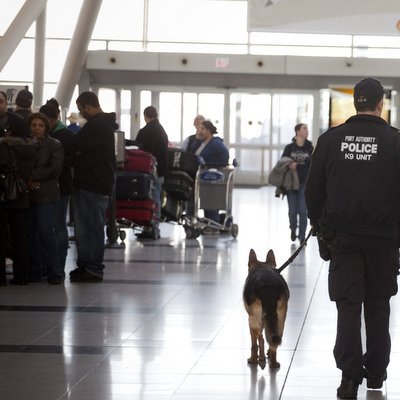A Guide To Travel Insurance Terrorism Cover
The answer to whether your travel insurance will cover you in the event of a terrorist act is a very big fat question mark. It is a minefield of garbled legal jargon that will give any layperson an immediate jabbing temple throb of a migraine wading through the mumbo jumbo.
To add another layer of insult to injury, buying travel insurance on-line seems to be the accepted mode of purchase. Whatever happened to a one on one explanation of your intimate needs when you want to know if your gold plated undies are covered in the case of a terrorist attack whilst blissfully sailing in the Caribbean?

The truth of the matter seems to be some insurance companies do, whilst the majority won't and for a few it is a grey miasma of "maybe", depending on the circumstances. Since the 9/11 World Trade Centre attack there has been a rethink by the insurance industry, as the losses suffered were massive and policy wording created a landslide of court cases due to the inherent different clauses and definitions of coverage, that left lawyers fighting over the meanings.
The answer lies in reading the PDS or policy disclosure statement, or the fine printed dribble, which we are left to our own devices to understand. Let's face it, reading the PDS is enough to make anyone go gaga and most people just want an upfront answer of yes or no. Some insurance companies have total exclusions of everything where terrorist activities are concerned, whilst some will offer a very limited cover.
The common wording of a general exclusion is "You will not have cover for claims that arise as a result of an act or threat of terrorism."
There is one fairly well known company that states very clearly in their policy: "Acts of terrorism are part of the general exclusions and this is applicable to all sections."
Whereas another strongly suggests that you are covered for:
Accidental death if it occurs as a result of an accident or terrorist act including in-flight cover. | |
Loss of income if you are unable to resume work upon your return due to an accident or terrorist act overseas. | |
Overseas medical, hospital, cash in hospital, dental and related expenses you have to pay as a result of an injury or illness (including injury arising from a terrorist act) which first occurs or becomes apparent after the issue date of your certificate of insurance. |
Whilst another, provides limited cover related to medical and evacuation expenses due to terrorism of up to $100,000 per policy.
The First BUT
.... and there is always a "but". Some explicitly state that you not covered if you are a terrorist or a member of a terrorist organization. Go figure!
Now imagine a terrorist insuring him or herself against an act that they are going to perpetrate and then claiming against their insurance company. I guess this person was never that clever in the first place.

The Second BUT
It does not matter what company you have your travel insurance with, as none of them will cover you for anything if you travel to a country with a Level 3 or 4 travel warning.
Travel warnings are issued by the Department of Foreign Affairs and Trade (DFAT) in Australia on their website. It is advisable to register your travel plans on this site before you leave the country. Citizens of the United States, Canada, the United Kingdom and New Zealand also have access to their own country's Government travel websites. The warnings give travellers essential information in relation to potential threats such as security, safety, natural disasters, health issues and terrorist threats or attacks that may be faced in over 170 countries worldwide.
Country Warning Levels:
Level 1 - Exercise normal safety precautions
Level 2 - Exercise a high degree of caution
Level 3 - Reconsider your need to travel
Level 4 - Do not travel
The Third BUT
If the country you are travelling in, is not listed on your insurance policy, then insurance companies will not cough up a cent. This is where you have to be honest about where you plan to go. If you decide to change your itinerary whilst overseas, always ring and check with your insurance company to find out if your policy will cover you for the new destination. Most insurance companies will cover you for Level 1 and 2, BUT not for countries under a Level 3 or 4 warning, the perceived risk is too high.
The Fourth BUT
It is all about timing. In a rush of excitement you book your trip before you take out travel insurance or check to see if the country is safe to travel to. You then find out that the country you are visiting is on the "do not go to under any circumstances - Level 4" list; you will not be reimbursed for the cost of your trip. On the other hand, you have your trip booked and your travel insurance start date is in place "with" terrorist coverage. A terrorist act happens after that date, but before or during your travel and it is then declared a Level 4 country; there is a good chance you will be able to claim a reimbursement for cancellation costs. However this is a grey area if ‘all acts of terrorism, direct or indirect’ are excluded.
Terrorism attacks are now an unpredictable travel "risk" and in spite of insurance companies mostly wiping out cover for acts of terrorism, your country's government will usually have contingency plans for such events when its citizens are involved. If you intend to travel to a "high risk" area, the smart thing to do is to talk to someone in the specialist insurance field where you can get cover for "war, terrorism and political violence", but, as always, these come at a cost. Large multinational companies use this type of insurance when operating in politically unsafe areas.
Travel insurance is not an "extra" when travelling, it is a necessary item despite the wide spread non-cover for terrorism. You could fall off an elephant on a jungle trek in some far away land, with not a terrorist in sight. Forget about being blown up, who wants to writhe around in agony in a mud hut with a broken leg?
Gail Palethorpe, a self proclaimed Australian gypsy, is a freelance writer, photographer and eternal traveller. Check out her website Gail Palethorpe Photography and her Shutterstock profile.















